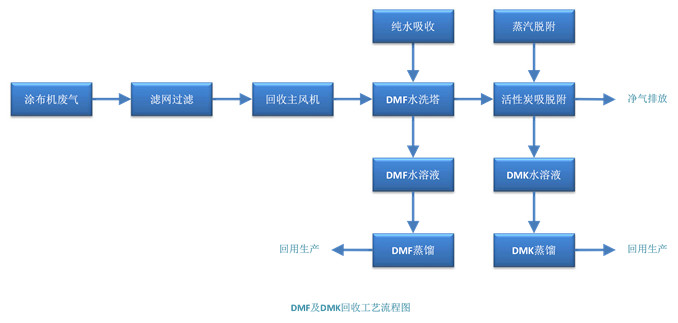3.1 Technical Background
The current production of CCL is wet production, and the glue contains 30%~40% organic solvent. During the dipping and drying process of the substrate in the gluing machine, these solvents volatilize into the air, which has a great impact on the pollution of the environment. The waste gas containing a large amount of organic solvents is usually discharged directly or sent to the waste gas incinerator to burn it. In response to environmental protection requirements and economic benefits, there are very few direct emissions, and most copper clad laminate factories use incineration to treat these waste gases.
Although the incinerator can oxidize the solvent in the exhaust gas into CO2 and water, it needs energy consumption to use the furnace body to reach about 760°C, and it needs to consume light diesel or natural gas. At present, the best RTO in the world consumes about 15-20kg/ h, the equipment price is also quite expensive. RTO oxidizes the solvent in the exhaust gas and releases heat for reuse in production, but the combustion heat of acetone and DMF in the exhaust gas is more than 6,000 calories/kg, which is not cost-effective compared with diesel and natural gas (more than 10,000 calories/kg), let alone the current The price of acetone is at least 1/3 higher than that of diesel natural gas. The recovery rate of RTO heat energy is not high, only about 80%. The operation is quite difficult and dangerous. It is to recover the solvent with low combustion heat and high price, and use the fuel with low price and high combustion heat to generate heat. Good choice. In today's cost competitive CCL industry, it will surely create a new breakthrough in the entire CCL industry.
3.2 Process flow

3.3 Process description
The production exhaust gas discharged from the workshop is filtered to remove high-viscosity pollutants in the exhaust gas, and after secondary cooling (heat exchanger), it is sent to the water washing tower through the main windmill to remove DMF, and the remaining exhaust gas uses activated carbon to absorb acetone. The saturated activated carbon is desorbed, and the desorbed acetone aqueous solution is purified and recovered by distillation, and recycled for production.
The entire processing and recycling system mainly includes the following main systems:
Gas collection system: used for gas collection. Including the main body of the intake air collecting box, the exhaust hood, the intake tee, the system damper, and the exhaust damper.
Exhaust gas filtration cooling pressurization system: Overcome the internal resistance of the absorber to facilitate the adsorption of organic matter in the exhaust gas and improve recovery efficiency. Includes gas filter, air cooler, fan.
Water washing system: wash out the DMF components in the exhaust gas, including water washing towers, circulation pumps and pipelines of each layer.
Adsorption system: Adsorb the organic matter in the exhaust gas from the top of the water washing tower to enrich the acetone on the surface of the activated carbon; it is mainly activated carbon tank and various control valves.
Desorption system: the main purpose is to desorb organic matter, so that the organic matter exists in the form of aqueous solution, and the activated carbon can be reused. This system is mainly for the activated carbon tank control valve, cooler, and storage tank.
Distillation system: the main purpose is to separate water from acetone, so that the recovered acetone can be directly reused in the production process. This system is mainly composed of acetone distillation tower and auxiliary heat exchanger and pipeline storage tank.
Control system: This system adopts fully automatic PLC control, requiring only a small amount of labor.
3.4 Product Features
Technical features: high-value DMF can be recycled; less process water is consumed, the absorption liquid can be recycled, and there is no secondary pollution; low operating costs and less one-time investment.
Process features: The device occupies a small area and has no secondary pollution. It mainly adopts packing absorption tower, equipped with high-efficiency spraying device, the absorbent is water or DMF thin liquid, and the fan adopts frequency conversion control, which has low energy consumption and obvious economic benefits. The device adopts high-efficiency four-cycle absorption process, and the DMF-containing gas is repeatedly absorbed through the high-concentration, medium-, slightly-low, and low-concentration circulating fluids to ensure the recovery effect. Three sets of liquid collectors are installed in the tower so that the fourth-stage absorption liquid does not mix. The absorption tower has a built-in fourth-stage circulating liquid storage tank to reduce the floor space and increase the height of the tail gas discharge port.
3.5 Technical indicators
DMF recovery rate 95%
DMF purification 99.9% reuse
Acetone Recovery 95%
Acetone purified 99.5% for reuse
3.6 Process method
DMF recovery: water washing, distillation; Acetone recovery: activated carbon adsorption, steam desorption, distillation.
3.7 Main Patents
201420534322.X DMF waste gas water washing recovery device for copper clad laminate manufacturing.